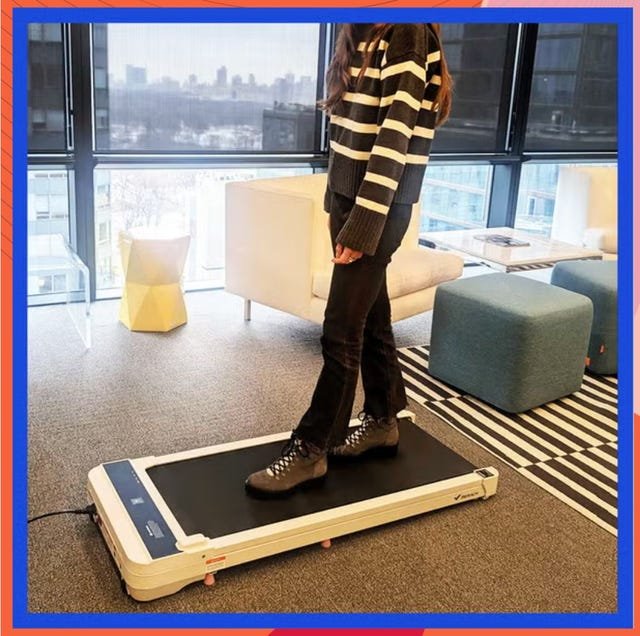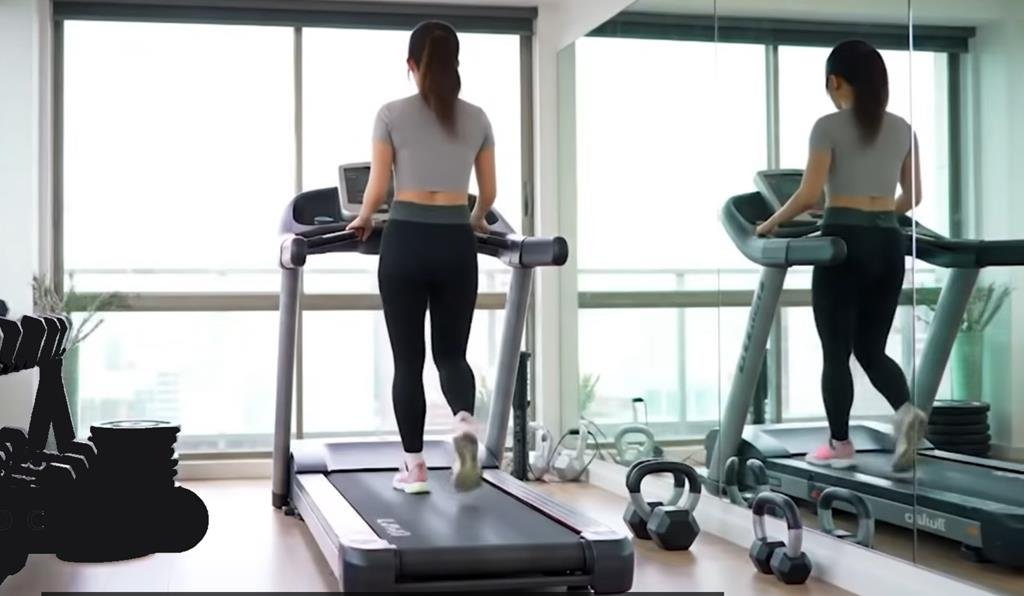Are you thinking about using a walking pad at home but wondering if it will work well on your carpet? You’re not alone.
Many people face this exact question before setting up their walking pads. The good news is, understanding how a walking pad interacts with carpet can help you get the most out of your workout without damaging your floor or the device.
Keep reading to discover practical tips and important facts that will make your walking pad experience smooth and effective—right on your carpet.
Walking Pads And Carpet Compatibility
Walking pads are compact treadmills designed for easy home use. Many people wonder if they work well on carpet floors.
The type of carpet can affect the walking pad’s performance and safety. It is important to understand how walking pads function and how carpets impact them.
How Walking Pads Work
Walking pads use a motor to move a belt under your feet. You walk on the belt while it keeps moving at a set speed.
They have sensors to control speed and stop the belt if you step off. The motor needs a flat and stable surface to work properly.
- The belt moves continuously powered by a motor
- Sensors detect your movement and adjust speed
- Stable support keeps the walking pad balanced
- Surface affects motor load and belt movement
Types Of Carpets And Their Impact
Carpets vary by thickness, material, and pile height. These factors change how well a walking pad works on them.
Thicker carpets may cause the walking pad to tilt or sink. This can affect belt movement and motor strain.
- Low-pile carpets offer better stability and support
- High-pile carpets may soften the base and reduce balance
- Thick padding can block airflow to the motor
- Hard carpets or rugs provide firmer surfaces for walking pads
Challenges Of Using Walking Pads On Carpet
Using a walking pad on carpet can be tricky. Carpets affect how the walking pad works and feels.
This guide covers common challenges when you use walking pads on carpet floors.
Stability Concerns
Carpet makes walking pads less steady. The soft surface can cause wobbling or slipping.
Thicker carpets create more instability. This can make walking unsafe or uncomfortable.
- Soft carpet cushions the walking pad unevenly
- Walking pad may shift during use
- Harder to keep balance on plush carpet
Wear And Tear Issues
Carpet can cause more wear on the walking pad’s motor and belt. The extra resistance strains the parts.
Dirt and fibers from carpet can get into the walking pad. This may cause damage or reduce its lifespan.
- Walking pad motor works harder on carpet
- Carpet fibers can clog moving parts
- More frequent cleaning and maintenance needed
Noise And Vibration Factors
Walking pads on carpet may produce more noise. The soft surface can amplify vibrations.
Vibrations can bother others in the room or downstairs neighbors. Noise levels can be higher than on hard floors.
- Carpet softens impact but increases vibration
- Noise may travel through walls more easily
- Using a mat under the walking pad can help
Tips For Using Walking Pads On Carpet
Using a walking pad on carpet can be tricky. The carpet surface affects how well the pad works and how safe it is.
Here are some tips to help you use your walking pad safely and effectively on carpet floors.
Choosing The Right Carpet
Not all carpets work well with walking pads. Thin, low-pile carpets are better because they offer a firm surface.
Thick or fluffy carpets can make the walking pad less stable and may affect its performance.
- Pick carpets with low or medium pile height
- Avoid thick, shaggy carpets
- Ensure the carpet is clean and dry
Placement And Surface Preparation
Place the walking pad on a flat, even area of the carpet. This helps keep it steady while you walk.
Make sure to clear the area of any loose objects or debris that could cause imbalance.
- Find a flat spot on the carpet
- Remove rugs or mats underneath
- Vacuum the carpet to remove dust and dirt
- Check the walking pad’s feet for firm contact
Using Protective Mats
Place a protective mat under the walking pad to protect the carpet and improve stability.
Mats can prevent carpet damage and reduce noise from the walking pad’s movement.
- Use a thin, firm mat made for exercise equipment
- Check the mat fits the walking pad size
- Regularly clean the mat and carpet underneath
- Replace the mat if it wears out

Maintenance And Safety Considerations
Using a walking pad on carpet needs care to keep it safe and working well. Regular checks and cleaning help stop damage.
Safety matters a lot to avoid slips and falls. Adjust settings to fit your walking style and carpet type.
Regular Inspection And Cleaning
Check the walking pad often for dirt and wear. Look under the pad to find dust or hair that can block parts.
Clean the surface and belt with a soft cloth. Avoid water or harsh cleaners that may harm the machine.
- Remove dust from the belt and motor area
- Check for loose screws or damaged parts
- Wipe the walking surface weekly
Preventing Slips And Falls
Place the walking pad on low-pile carpet for better grip. Thick carpets can make it unstable and unsafe.
Keep the area around the walking pad clear. This stops tripping on objects while walking.
- Use a mat under the walking pad to stop slipping
- Wear proper shoes with good grip
- Start walking slowly to keep balance
Adjusting Walking Pad Settings
Set the speed to a safe, comfortable level based on your skill. Higher speeds on carpet can cause slips.
Adjust incline and other features carefully. Test changes slowly to avoid sudden moves that can cause falls.
- Start at low speed and increase gradually
- Use safety stop features if available
- Follow manufacturer guidelines for carpet use
Alternative Solutions For Carpeted Areas
Using a walking pad on carpet can be tricky. The carpet may cause instability or damage.
There are good solutions to make walking pads work better on carpets.
Using Hard Floor Mats
Hard floor mats create a flat, firm surface on top of your carpet. This helps the walking pad stay steady.
These mats protect your carpet and the walking pad from wear and tear.
- Choose mats that cover the entire area under the walking pad.
- Look for durable materials like PVC or rubber.
- Non-slip mats improve safety and stability.
Temporary Flooring Options
Temporary flooring can be a good choice for carpeted rooms. It is easy to set up and remove.
Materials like interlocking foam tiles or roll-out vinyl offer a stable base for walking pads.
- Foam tiles are soft but firm enough for light exercise.
- Vinyl sheets provide a smooth and solid surface.
- Both options protect your carpet from damage.
Considering Other Exercise Equipment
If a walking pad is hard to use on carpet, try other exercise tools. Some work better on soft floors.
Options like stationary bikes or elliptical machines can fit carpeted rooms well.
- Stationary bikes stay stable on carpet with a mat.
- Ellipticals offer low-impact workouts without slipping.
- Choose equipment that suits your space and exercise needs.


Frequently Asked Questions
Can A Walking Pad Be Used On Thick Carpet?
Using a walking pad on thick carpet is not ideal. It may cause instability and damage the carpet fibers. A firm, flat surface is recommended for safety and optimal performance.
Does Carpet Affect Walking Pad Performance?
Yes, carpet can reduce walking pad efficiency. It may cause the belt to slip and increase motor strain. Hard floors provide smoother, safer operation.
How To Protect Carpet Under A Walking Pad?
Place a sturdy mat or board beneath the walking pad. This prevents carpet damage and improves stability. It also helps distribute weight evenly for better performance.
Will Using A Walking Pad On Carpet Cause Damage?
Extended use on carpet might wear down fibers and padding. The walking pad’s movement can create indentations and reduce carpet lifespan. Use protective layers to minimize harm.
Conclusion
Using a walking pad on carpet is possible with care. Ensure the carpet is stable. Check for slipping or shifting while in use. A mat can help protect the carpet. Choose a walking pad with suitable features. Always prioritize safety and comfort.
Keep the area clear of obstacles. Regularly inspect the walking pad for wear. Follow the manufacturer’s guidelines for best results. This helps extend the life of your device. Walking pads are great for indoor exercise. Enjoy your walking routine safely on carpet.



